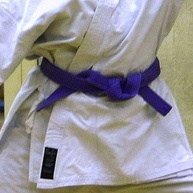A quick Google search says we have over 50,000 options for sales seminars to teach sellers how to win more deals. Of all the options, would you expect to find the General Electric (GE) system known as Lean Six Sigma to be included? You should. Xerox’s recent success with 8,000-plus sellers is rooted in these principles.The September/October 2010 issue of Selling Power highlighted the Xerox success story and demystifies the ominous title of Black Belt.
Six Sigma Explained
Six Sigma, which was developed at Motorola in the 1980s, uses the DMAIC project management framework (define, measure, analyze, improve, and control) in the quest to reduce defects to 3.4 per million. Lean Six Sigma, or LSS, combines lean manufacturing principles designed to streamline business processes with Six Sigma’s quality-improvement methodology. In 1995, Jack Welch ordered GE to adopt LSS on an organization-wide basis and three years later announced that it had saved the company more than $750 million.
Training
Training is where it starts – just as Xerox did in 2003. Employees progress through karate-like ranks from yellow belt to green belt to black belt. By 2004, Xerox has trained more than 10,000 yellow belts, 2,500, green belts and 400 black belts.
LSS for Sales
“It’s easy to see how LSS can be used to drive improvement on the manufacturing floor, in the supply chain, or in the development organization, but its applications in the sales function and to an individual sales person are less clear,” explained Jim Firestone, Xerox’s President of Corporate Operations. “But it does apply to all the processes within the function, such as training, the distribution of information and communication, time management, prospect prioritization and management and compensation.” Xerox is using this methodology to develop programs for sales and to measure the effectiveness of those programs.
LSS for the Seller
Less has led to a more efficient and effective Xerox that is developing strong returns for shareholders. As a baseline, sellers can now talk about what LSS has done for the company overall and how a better Xerox is good for customers.
Xerox, like many other B2B selling companies, is redefining itself as a services organization and not just a company that sells products. The sales force is now approaching customers with a service-centric message about helping customer focus on core competencies by having Xerox use LSS strategies to streamline their global use of documents.
This requires that sales people understand LSS, but not become experts. Xerox exposes sales reps to LSS in on boarding and encourages them to get yellow-belt training, which is a fairly light level of exposure. Yellow-belt training is an eight-hour web-based overview of LSS and does not require any tests.
Summary
Doug Buress of Xerox put it best in the article; “If we make our customers more productive, we get more business and grow our bottom line.”
Keep up-to-date with Fast Track Tools by subscribing to our blog so you will be the first to know about special, free offers.
